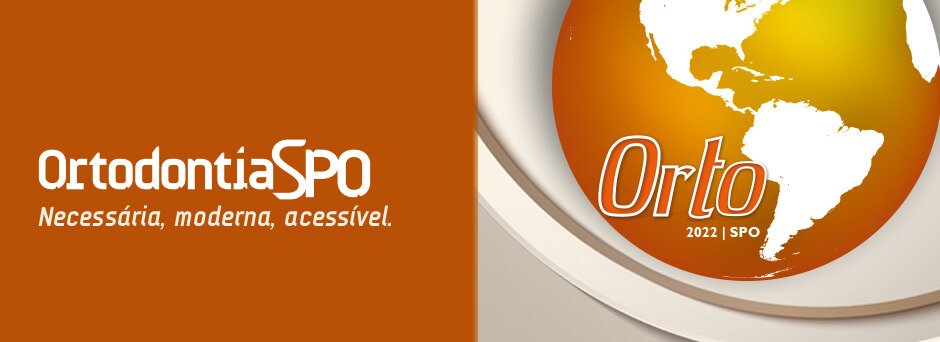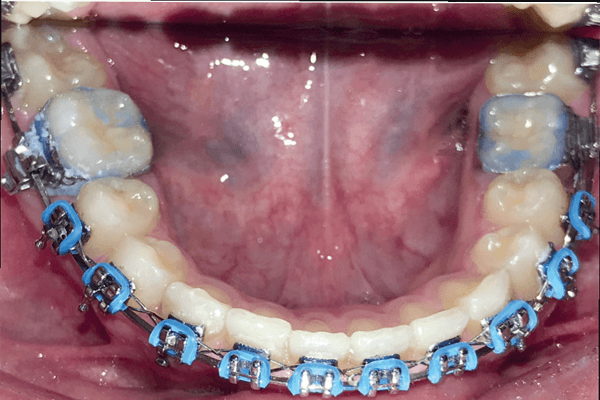AUTORES
Caio Vinícius Martins do Valle
Mestre em Ortodontia e doutor em Reabilitação Oral – FOB-USP.
Orcid: 0000-0002-7772-5224.
Karyna do Valle Corotti
Doutora em Ortodontia – FOB-USP.
Orcid: 0000-0003-4624-8784.
Maira Cristina Tomczak Hoffmann
Graduada em Odontologia – Uningá.
Orcid: 0000-0001-6661-0424.
Mayra Fernanda Ferreira
Graduada em Odontologia e mestranda em Saúde Bucal da Criança – FOA/Unesp.
Orcid: 0000-0003-0442-3126.
Daniel Giaretta Fangueiro
Mestre em Ortodontia – Universidade do Sagrado Coração.
Orcid: 0000-0002-5019-999X.
Rayane de Oliveira Pinto
Doutoranda em Ortodontia – FoAr/Unesp.
Orcid: 0000-0002-3966-9727.
RESUMO
Entre as possibilidades ortodônticas mais comuns para o tratamento da Classe II subdivisão estão as extrações assimétricas e o uso de elásticos intermaxilares e propulsores mandibulares fixos. Estes aparelhos podem ser classificados em rígidos, flexíveis e híbridos. O aparelho TFBC é um propulsor mandibular fixo do tipo híbrido, de fácil instalação e tamanho reduzido que funciona sob o sistema de encaixe no fio retangular. O objetivo deste trabalho foi descrever um caso clínico em que foi utilizado o TFBC no tratamento da Classe II assimétrica de forma rápida e eficiente. O tratamento foi realizado em duas fases. Na fase interceptiva, foi realizada expansão lenta dos arcos superior e inferior para dissolução do apinhamento no segundo período intertransitório da dentadura mista. Na fase da Ortodontia corretiva, foi instalado um aparelho fixo superior e inferior, alinhados e nivelados os arcos e instalado o aparelho TFBC. O aparelho TFBC foi mantido por três meses até leve sobrecorreção anteroposterior. O planejamento adequado do recurso de correção da Classe II possibilitou um tratamento efetivo em um curto período de tempo, sem a necessidade de colaboração do paciente e desgaste do relacionamento paciente-dentista. Ao final do tratamento, foi devolvida a harmonia à oclusão e preservadas as estruturas dentoalveolares apicais.
Palavras-chave – Má-oclusão de Angle Classe II; Técnicas de movimentação dentária; Ortodontia corretiva.
ABSTRACT
Among the most common orthodontic possibilities for the treatment of Class II subdivision are the symmetrical and asymmetric extractions, the use of intermaxillary elastics and fixed functional appliances. These appliances can be classified into rigid, fl exible and hybrid. The TFBC device is a fixed, hybrid type, easy-installation and small design that operates under fitting the rectangular wire. The objective of this article was to describe a clinical case that TFBC was used in the treatment of asymmetric Class II quickly and efficiently. The treatment was performed in two phases. In the interceptive phase, the upper and lower arches were slowly expanded to dissolve the crowding in the second intertransitory period of the mixed dentition. In the corrective orthodontic phase, fixed appliances were installed in the upper and lower arches, aligned and levelled and after, installed TFBC apparatus. TFBC was maintained for three months until mild overcorrection. Appropriate planning in the Class II correction made possible an eff ective treatment in a short period of time, without the patient collaboration and detrition of the patient-dentist relationship. At the end of the treatment the harmony was returned to the occlusion and the apical dentoalveolar structures was preserved.
Key words – Angle Class II malocclusion; Tooth movement techniques; Orthodontics corrective.
Recebido em abr/2020
Aprovado em mai/2020






